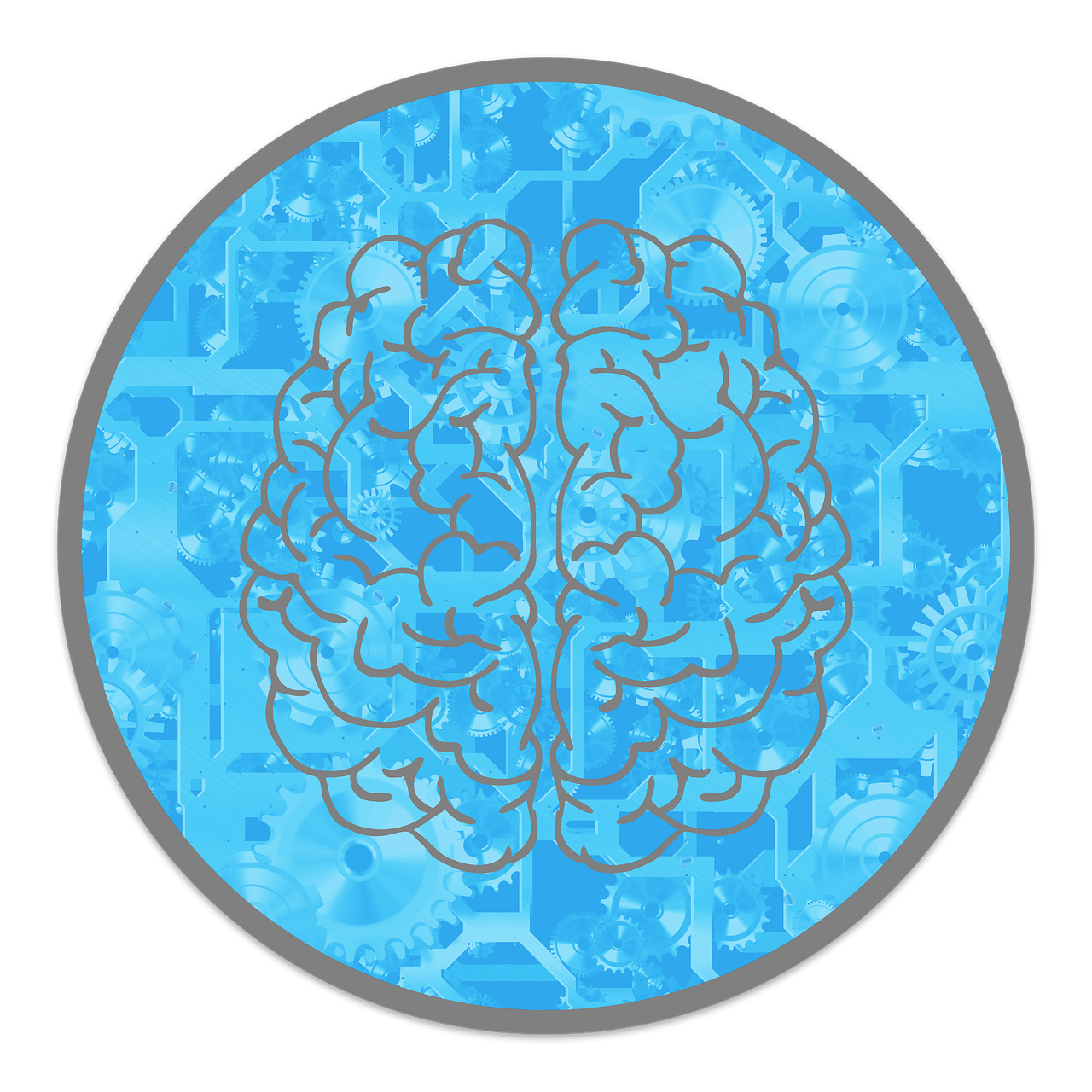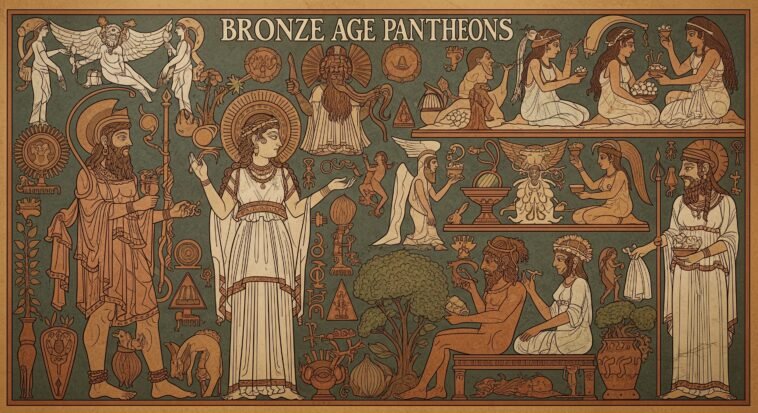
The Bronze Age (3300–1200 BCE) wasn’t just about cool tech and big cities—it was when gods ran the show and religion ruled daily life.
From Mesopotamia to Europe, people used rituals and sacred spots to make sense of the world and their place in it.
In this article, you’ll get the lowdown on Bronze Age gods, rituals, and holy hangouts—think of it as your VIP pass to ancient spiritual life, no time travel needed. Perfect for history nerds or anyone curious about how our ancestors kept it real with the divine.
Why the Bronze Age Matters in Religious History
If you want to understand where today’s religions got their mojo, you’ve got to start with the Bronze Age.
Lots of the symbols, stories, and even building styles we see now actually have roots way back then.
According to the Cambridge History of Religions in the Ancient World, this period set up the blueprint for later myths, temples, and priest roles—basically the OGs of the spiritual world—that eventually shaped everything from Greek gods to modern faiths.
So yeah, the Bronze Age was kind of like the starter pack for religion as we know it.
The Pantheons: Gods of Sky, Earth, and Sea
Let’s break down the big players in Bronze Age religions — think of it as the ancient version of an all-star lineup for gods and goddesses, each with their own drama, powers, and fan clubs.
1. Mesopotamian gods: The divine bureaucracy
Imagine a divine office building where every god has a specific department and job title.
That’s Mesopotamia for you — home to the Sumerians, Akkadians, Babylonians, and Assyrians.
They had a big ol’ team of gods who ruled different parts of the world and life.
- Anu — the god of the sky and the father of all gods. Think of him as the ultimate boss, probably with a thunderous voicemail.
- Enlil — like the head of HR who controls air traffic and decides who gets a promotion or a cosmic curveball.
- Inanna (or Ishtar) was the goddess of love and war, kind of like a badass warrior queen who also knows her way around a romantic playlist.
These gods acted like humans with all the drama — jealousy, love, revenge — the works.
Their temples, especially the massive ziggurats, were more than just places to pray.
They were like city hall, banks, and social clubs rolled into one.
2. Egyptian deities: Divine order and afterlife
Egyptian religion was all about keeping the universe in balance — they called this cosmic harmony ma’at — and prepping for the afterlife, which was basically the VIP lounge you wanted to get into after death.
- Ra: was the sun god who cruised across the sky every day in his solar barque — picture a divine cruise ship lighting up the world.
- Osiris: ruled over the dead and was the OG of resurrection stories. Think of him as the ultimate comeback king.
- Isis: his wife, was the goddess of magic and motherhood — part spellcaster, part supermom.
Pharaohs were considered living gods on Earth, the ultimate bridge between humans and the divine.
Their temples like Karnak and burial spots like the Valley of the Kings were like ancient luxury suites, designed to keep their souls partying forever.
3. Indus valley mysteries
Here’s where things get a bit mysterious — the Indus Valley script still baffles scholars, so we’re piecing things together from what we find.
- They worshipped mother goddesses, shown in small statues, suggesting a focus on fertility and nurturing.
- Sacred animals like bulls and elephants popped up a lot — maybe ancient spirit mascots?
- The Great Bath of Mohenjo-Daro hints at ritual cleansing — think of it like a spiritual hot tub day where you wash off bad vibes and start fresh.
4. Aegean gods and nature spirits
Over in the Aegean Sea region, the Minoans and Mycenaeans had their own divine squad.
- Minoan goddesses were often shown with serpents, birds, or standing on mountains — all fertility and nature symbols.
- The Mycenaeans later brought in early versions of familiar Greek gods — like Zeus, Poseidon, and Hera — laying the groundwork for the epic myths that would follow.

Rituals and Religious Practices
Let’s talk about the daily spiritual hustle of Bronze Age folks—how they tried to stay on the good side of their gods and make sense of the big mysteries around them.
1. Sacrifice and offerings
- Sacrifices were kind of like the ultimate “thank you” or “pretty please” to the gods. People believed giving something valuable would score divine brownie points.
- Animals like sheep, goats, and bulls were the usual gifts—think of it as ancient BBQ offerings but with a holy twist.
- They also offered grain, wine, or incense—basically the Bronze Age version of bringing a nice bottle of wine or candles to a dinner party.
- Sometimes, things got intense with human sacrifices in desperate times, like on Minoan Crete or early China.
The goal? Keep the gods happy, ask for favors, or cleanse the community from bad vibes and disasters.
2. Divination and oracles
When Bronze Age people needed answers—whether about war, crops, or love—they turned to divine advice, using some seriously creative methods.
- Extispicy was reading animal guts (yep, literally checking entrails) to predict the future or get a yes/no from the gods. Talk about gutsy decision-making!
- Astrology wasn’t just star-gazing for fun; they charted celestial movements to decode cosmic messages. Basically, they had their own ancient horoscope apps.
- In Shang Dynasty China, oracle bones were used—people carved questions into bones, then heated them until cracks formed.
These practices were the granddaddies of today’s fortune telling and spiritual prediction.
3. Seasonal festivals and ceremonies
The Bronze Age calendar wasn’t just for counting days—it was a guide to when to celebrate, work, and honor the gods in sync with nature.
- Spring planting rites kicked off the growing season, asking for a good harvest. Picture a big “let’s get this farming party started” vibe.
- Harvest celebrations were the ancient version of Thanksgiving—time to thank the gods for the food that would keep everyone alive.
- Solstice ceremonies marked the longest or shortest days of the year, reminding everyone how connected they were to the sun, seasons, and the cosmic dance.
These festivals brought communities together, boosted morale, and kept their relationship with the divine strong and ongoing.

Sacred Sites: Where Earth Met Heaven
Back in the Bronze Age, people didn’t just pray anywhere—they built some seriously impressive spots where the divine felt close enough to high-five.
1. Ziggurats of Mesopotamia
Think of ziggurats like the ancient version of Mount Olympus—big stepped towers reaching for the sky.
The Ziggurat of Ur, for example, was like a VIP club where only priests got backstage passes to hang out near the gods.
These towers weren’t just architecture; they were a power move, showing the gods were watching—and so were the priests.
2. Egyptian temples and tombs
Egyptians took “location, location, location” to a whole new level.
Temples like Luxor and Abydos were built with cosmic precision, perfectly lined up with stars and sunrises.
The Pyramids of Giza? Not just fancy tombs—they were like ancient space elevators aligned with Orion’s Belt, designed to launch pharaohs straight into the afterlife VIP lounge.
3. Stonehenge and Megalithic Europe
Stonehenge wasn’t just a giant rock puzzle—it was the ultimate summer and winter solstice hangout.
Imagine ancient folks marking the calendar by watching the sun rise between those massive stones, probably throwing some serious seasonal rituals.
Ireland’s Newgrange did the same, with its passageway lighting up perfectly on the winter solstice—like Mother Nature’s own disco light show.
4. Indus Valley’s great bath
Over in Mohenjo-Daro, they built the Great Bath—a huge, fancy pool sealed tight to hold water for ritual cleansing.
Think of it as the first spiritual hot tub, where people likely washed off bad vibes before stepping back into daily life. It’s like the ancient version of a pre-yoga ritual—clean body, clear mind.
Priesthoods and Religious Authority
Power and prestige
In Bronze Age societies, priests weren’t just chanting and burning incense—they were the real VIPs, often ranking just below the kings. Here’s the deal:
- They ran the temples like CEOs, making sure everything from rituals to sacred business was on point.
- They played oracle, interpreting omens like ancient fortune-tellers predicting everything from crop success to war outcomes.
- In places like Mesopotamia, priests even managed the temple’s “bank accounts,” controlling resources and wealth. Talk about power moves.
This mix of religious and political muscle kept the social ladder sturdy and made kings look even more god-like—literally.
Women in religion
Don’t think it was all dudes in robes.
In places like Minoan Crete and Sumer, priestesses were front and center.
Take Enheduanna, for example—she was the high priestess and also the world’s first known named author around 2300 BCE.
Her hymns to the goddess Inanna blended religion, politics, and some serious poetic flair.
Basically, she was the OG influencer of spirituality and power.

Legacy of Bronze Age Religion
Even though Iron Age and later monotheistic religions took center stage, Bronze Age beliefs left some epic legacies:
- The classic myth of gods vs. chaos monsters (hello, Tiamat vs. Marduk) inspired famous stories you’ve probably heard in the Bible and Greek myths.
- The blueprints for temples, ritual calendars, and priesthood roles stuck around, evolving but still recognizable.
- And that whole idea of divine kingship? It shaped how rulers from Roman emperors to medieval monarchs strutted their stuff, claiming they had a direct hotline to the gods.
So yeah, Bronze Age priests and priestesses weren’t just spiritual guides—they set the stage for how religion and power dance together even today.
Conclusion: Echoes of the Divine Past
Bronze Age religion wasn’t just ancient rituals—it shaped how we connect with gods, people, and nature.
Those giant temples and epic myths?
Think of them as the OG bridges between earth and sky, still influencing today’s spiritual vibes.
So when you check out a ziggurat or a myth about mighty gods, you’re tuning into a 4,000-year-old spiritual playlist that’s still dropping hits and shaping how we see faith and the universe.



